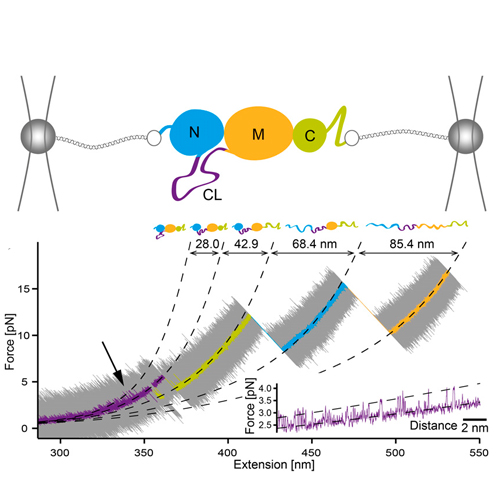The charged linker of the molecular chaperone Hsp90 modulates domain contacts and biological function
16-Dec-2014
PNAS, 2014, doi: 10.1073/pnas.1414073111, vol. 111, no. 50, 17881–17886 published on 16.12.2014
PNAS, online article
PNAS, online article
The heat shock protein 90 (Hsp90) is a dimeric molecular chaperone essential in numerous cellular processes. Its three domains (N, M, and C) are connected via linkers that allow the rearrangement of domains during Hsp90’s chaperone cycle. A unique linker, called charged linker (CL), connects the N- and M-domain of Hsp90. We used an integrated approach, combining single-molecule techniques and biochemical and in vivo methods, to study the unresolved structure and function of this region. Here we show that the CL facilitates intramolecular rearrangements on the milliseconds timescale between a state in which the N-domain is docked to the M-domain and a state in which the N-domain is more flexible. The docked conformation is stabilized by 1.1 kBT (2.7 kJ/mol) through binding of the CL to the N-domain of Hsp90. Docking and undocking of the CL affects the much slower intermolecular domain movement and Hsp90’s chaperone cycle governing client activation, cell viability, and stress tolerance.











